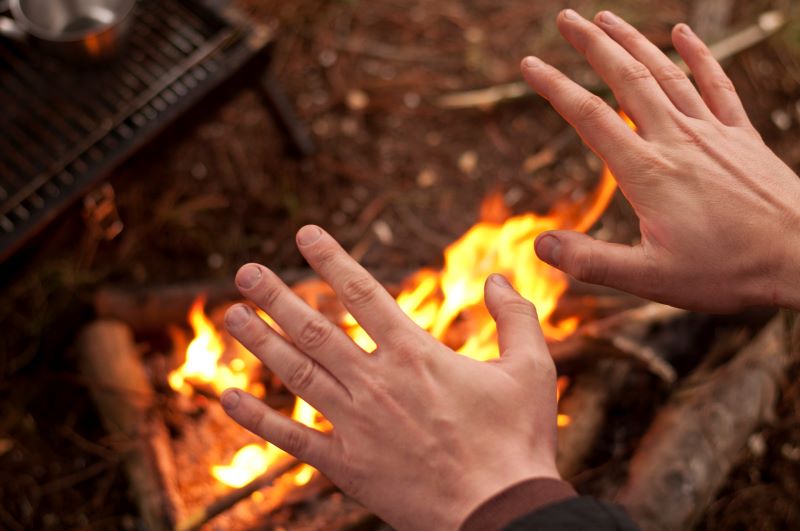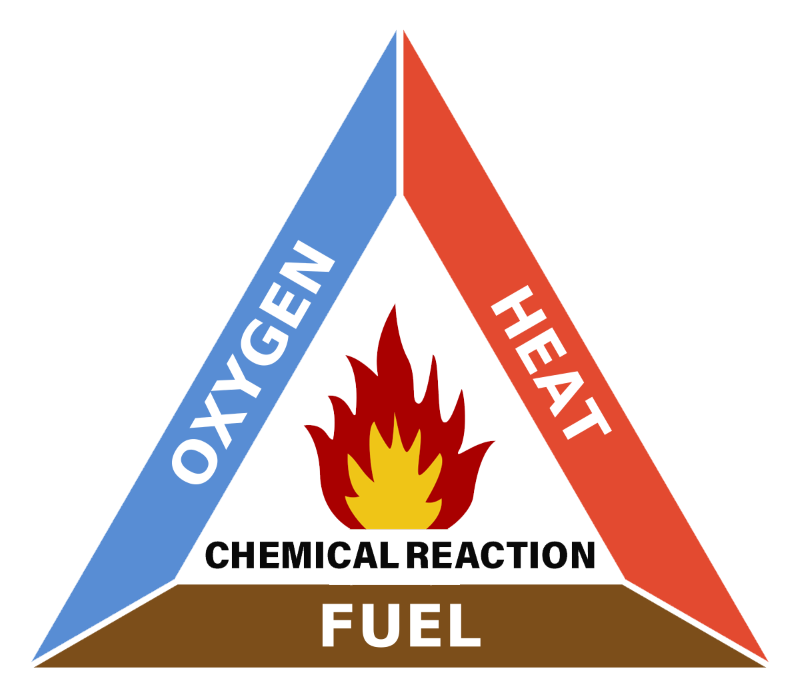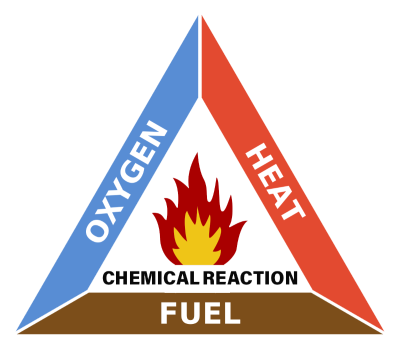Article by Lars Mascera – Marketing Manager –
The Fire Triangle is a fundamental concept in fire protection, representing the three elements necessary for a fire to occur: fuel, heat, and oxygen. The interplay between these three elements is crucial to understanding fire behavior and developing effective fire prevention strategies.
Perhaps you have noticed the faint smell of a campfire or the orange tint in the skies overhead as you walk outside. Typically, it would just be your neighbor’s overcooked hamburgers at their backyard BBQ. But on the eastern half of the U.S., it has been the remnants of over 584 active fires that have consumed more than 20.7 million acres actively burning across Canada. Firefighters cannot get ahead of the incredible speed at which it is consuming the forests. With the dry spring and now summer temperatures rising, this fire has an immense appetite for destruction.
Firefighters and public official will need to put their understanding of the fire triangle into practice to figure out a way to stop this disaster. For those of us that aren’t aware of what the fire triangle is, here is a breakdown of its components:

Fuel – The Catalyst for Fire
Fuel refers to any material that can burn and sustain a fire. It can include various substances, such as wood, paper, fabric, plastics, gases, and liquids. Different types of these fuels have distinct combustion properties and burning characteristics.
For instance, wood has a typical ignition temperature of 200-250°C (392-482°F) and, depending on its density and moisture content, burns relatively slow and steady. It will leave a byproducts of carbon dioxide (CO2), water vapor (H2O) and creates smoke of primarily carbon monoxide (CO).
Whereas plastics have typical ignition temperature of 300-400°C (572-752°F) and burn much more rapidly. When plastics burn, they also emit byproducts such as carbon monoxide (CO), Carbon dioxide (CO2). In addition, they also can emit nitrogen oxide (NO) sulfur dioxide (SO2) as well as other volatile organic compounds.
Understanding these different classes of fire, the fuel sources associated with each class and each substances ignition temperatures is vital for selecting the appropriate fire suppression methods.
Heat – Igniting the Blaze
Heat is the energy required to raise the temperature of fuel to its ignition point. Heat sources can vary, ranging from open flames, electrical malfunctions, sparks, friction, or even self-heating processes.
Ever hear of a fire being started in someone’s garage from a pile of rags that spontaneously burst into flames? Well this same method of heat production is what cause the famous One Meridian Fire in Philadelphia in 1991. Chemicals soaked into rags that are placed in the same bin or bucket, are capable of creating a chemical reaction of oxidation where they begin to self-heat to their ignition temperature. Heat, along with the fuel of the chemicals and rags themselves can’t make fire alone though. They will need a third very attainable part of the triangle to actually ignite into fire; oxygen.

Oxygen – Fueling the Flames
Oxygen is essential for combustion, as it supports the chemical reaction that sustains a fire. Air contains approximately 21% oxygen, which is the minimum concentration required to support combustion. Controlling the oxygen supply is a key factor in many fire suppression techniques, including the use of fire extinguishers, fire sprinkler systems, or gas suppression systems in enclosed spaces. The Victaulic Vortex™ system produces water droplets smaller than white blood cells and through a nitrogen system it removes the heat while also reducing the oxygen in the room. This system maintains an oxygen level in a room that is safe enough for a person to stand in and breathe, but not for a fire to burn.
Fire Tetrahedron – Maintaining the Fire
There is another fourth part to this triangle that builds upon the original fire triangle. In doing so, we call this the Fire Tetrahedron. Whereas the fire triangle discusses the elements needed to create the fire, the tetrahedron allows us to understand how a fire is sustained and is worth noting.
Combustion is the rapid reaction between the elements of fuel and oxygen which emits heat and light. Without this chemical chain reaction a fire cannot exist. The energy from this reaction helps to sustain and propagate the fire, allowing it to spread and intensify as we can clearly see in the forest fires from example above.
In the world of fire protection, this tetrahedron emphasizes the importance of interrupting, or removing, any of these four elements in order to extinguish a fire.
The Role of the Fire Triangle in Fire Protection
Understanding the fire triangle helps identify potential fire hazards and implement preventive measures. Although the Vortex™ system isn’t a system that can be installed throughout the forests of Canada, the basic principles are what we need to keep in mind. The strategy is to focus on disrupting this fire triangle to impede fire development and spread. By removing or controlling any of the three elements of the fire triangle, it is possible to prevent or extinguish fires effectively.

How You Can Apply Your Knowledge of the Fire Triangle
Awareness of the fire triangle empowers individuals to take proactive steps in fire prevention and protection. With your new understanding of this triangle, here are some ways to take action in the fight against fires:
- Proper storage and handling of flammable materials can reduce the availability of fuel.
- Regular inspection and maintenance of electrical systems can help minimize potential heat sources.
- Ensuring proper ventilation and controlling oxygen levels can limit fire growth and intensity.
- Keep extinguishers charged. Prompt and appropriate use of fire extinguishers or activation of fire suppression systems can disrupt the fire triangle of small fires and prevent disasters.
- Educating your kids and loved ones about the fire triangle and proper fire safety techniques can spread the wealth of knowledge and empowerment to others.
Fires can strike anywhere, at any time, and their consequences can be devastating. By understanding the fire triangle and its three essential elements – fuel, heat, and oxygen – individuals can make informed decisions to minimize fire risks. Stay vigilant, practice fire safety, and encourage others to do the same. Together, we can protect ourselves, our loved ones, and our communities from the devastating effects of fire.

